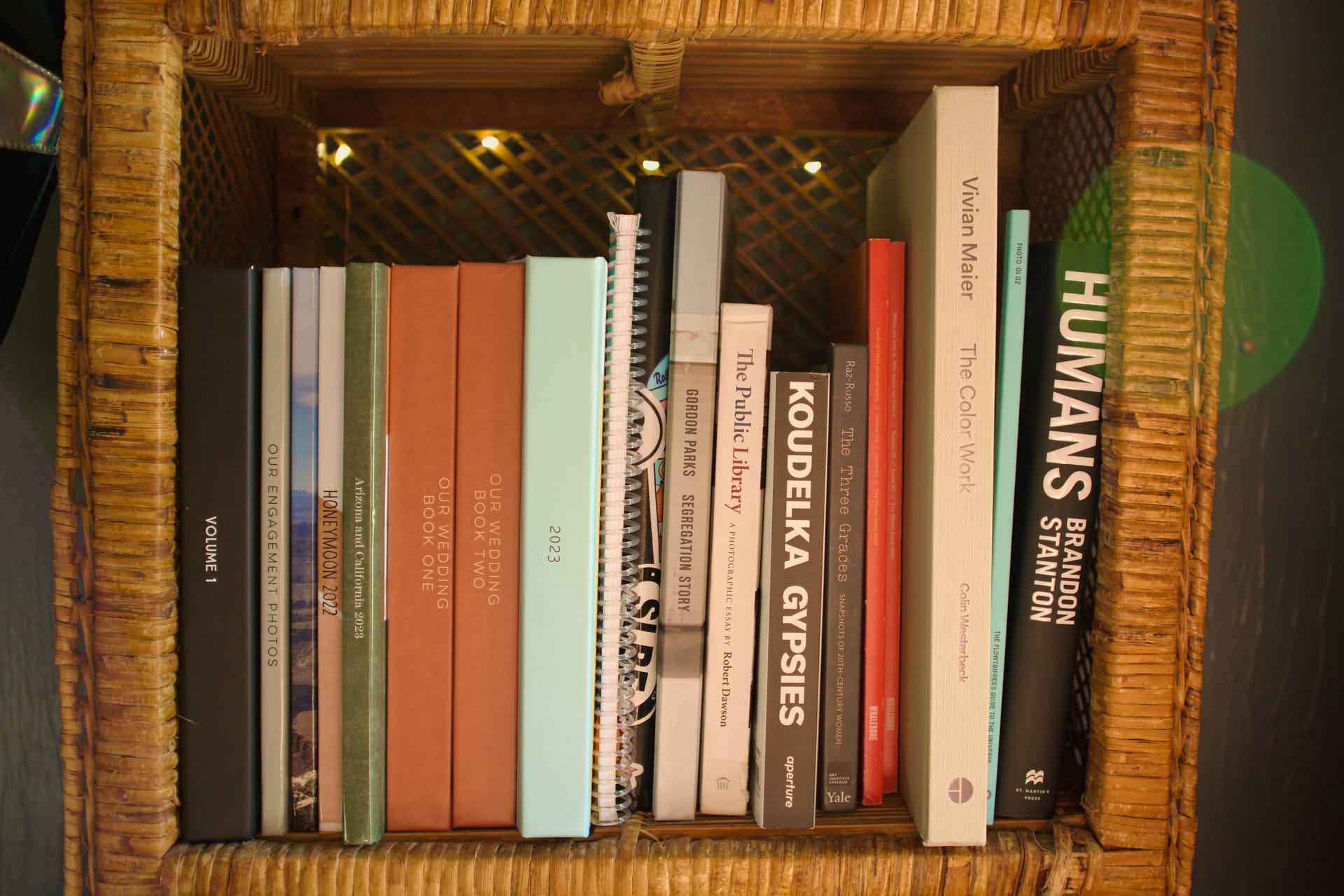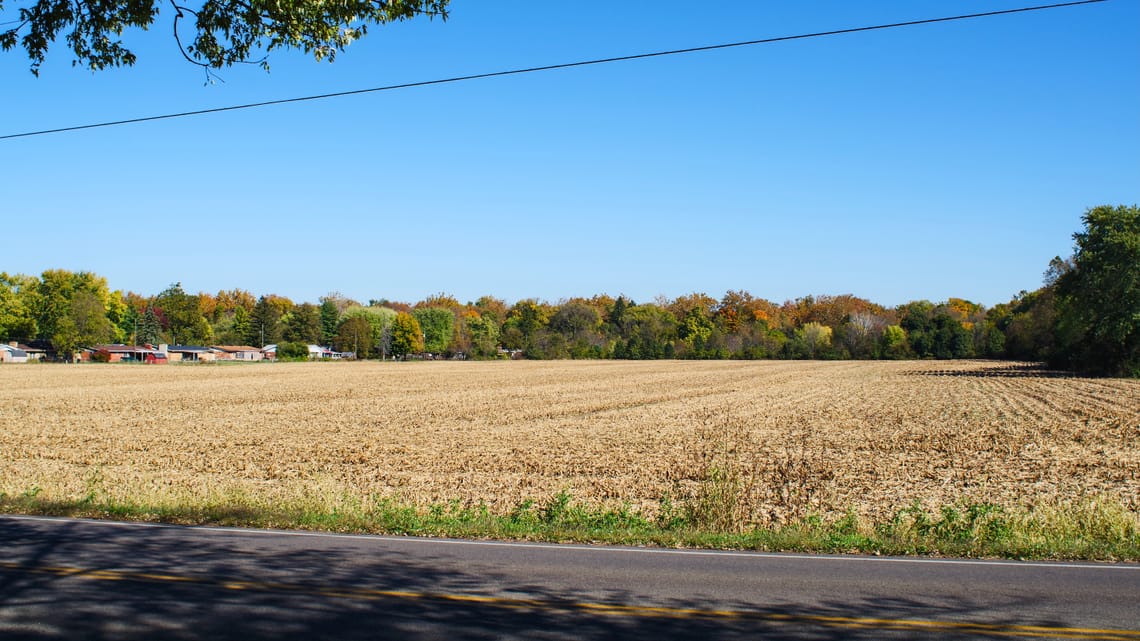I've officially caught the bug. We're currently planning on moving two large bookshelves into my office, and I can't wait to see my collection grow.
In the feature photo for this post, you'll see the beginnings of a small, humble collection - the eight books on the left are a collection of our own photos, beautifully curated and designed by my lovely partner who genuinely loves creating them (and has a knack for finding great deals while using Shutterfly). Three of the books are related to our wedding (we had an amazing photographer that I'll forever be grateful to), three of them are of the larger trips we've taken to National Parks, one of them is our "2023 yearbook," and "Volume 1" is a very special book to me.
It's my first photo book. Designed by my partner, she took literally hundreds of my favorite photos and spent hours designing it for me as a gift. I'm currently in the process of reviewing my work from 2024 to send to her for "Volume 2," and I'm very excited to see what she does with it.
I didn't purchase my first published photo book until our trip to Chicago earlier this year, though - we were with friends, and during our time there we decided to visit Myopic Books, and right at the front was a full display of photo books. There were plenty of copies from photographers that you would expect, but what caught my eye in particular was a used copy of The Three Graces: Snapshots of Twentieth-Century Women. I was fascinated at the fact that someone took the time to curate an entire collection of photos that only comprised of three women as the subjects, and the history provided in foreword was an incredible look into the history of photography and its role within the American family. Turns out, cameras were largely marketed to women with the idea that it was their "duty" to document their family, even during hard times when film was expensive.

While I could certainly go on about the fact that this was largely a ploy by companies who needed to sell their products, the end result is incredible and I'm very happy that these people took this ideal to heart - because now we have a great collection of art that spans an incredible era for women in America. I'm a big fan of "everyday life" photography, because it always reminds me that people are just people, out living their lives and fighting for every slice of happiness that they can find. I'd highly recommend picking up a copy.
Of course I could go on and on about the other photobooks that I've collected so far (and I probably will at some point in separate posts), but in general I've come to realize that physical manifestations of works are a different experience. My partner is an excellent decorator, and our walls are absolutely covered with art and photos; everywhere I look, there is something that brings me joy. I can't sit at our dining room table without staring at the wall-to-wall art with barely a hint of the walls that support them. Our loved ones do the same when we have them over, and we're always complimented on our gallery walls more than almost anything else.
It's funny - when I first met Ally, I had nothing like this. My home growing up had little to nothing in terms of art or even family photos on the walls, and I was someone who leaned towards the minimalist aesthetic. I thought that it would help remind me to only have what I need to fight the rampant consumerism of our time (and the fact that I was constantly moving between living arrangements certainly did not warrant the idea of collecting a bunch of material possessions - I was often getting rid of things every time I moved simply because I didn't want to deal with them).
But now, I'm currently planning on filling my office walls with art and my own printed works as well - I've been fully converted at this point. I have a home that begs to be filled with art, and I absolutely love it.
So all of this is to say that sometimes (as in, more often than not), it's great to interact with art in the most physical sense possible. I interact with these photos differently - away from screens, I find that I'm spending more time with each individual photo in these books, pouring over the little details and noticing things that I probably would not have taken the time to consider had I the opportunity to simply scroll past after sending a quick, low-effort "like." I'm more gentle to my own work, because I can see the progression over time and can appreciate each photo detached from a numerical value of the small, ultimately insignificant dopamine-hits of social media engagement or commercial value from selling my work.
And there are certainly limitations to this - I will eventually run out of wall space and will need to consider replacing some art for others. I will eventually run out of space on our bookshelves. And of course, all of this comes at a financial cost regardless of how often I buy used copies or affordable, small prints. I'm in a fortunate position of being in a home where we have the space to grow this collection, and I know this is not the case for many people.
But if you can, you should interact with physical mediums as much as possible. Visit your local library and see what they have available (I bet you'd be surprised!), visit your local art museums whenever you can, or even take the time to find a local coffee shop that supports local artists. My first gallery showing was at Redtree Coffee in Cincinnati, and it was such a special moment for me to see my work hanging among very talented artists.
Just whatever you do, try to inject a physical reality into our digital age. I think you'll be surprised at the results.
As always; stay curious!

